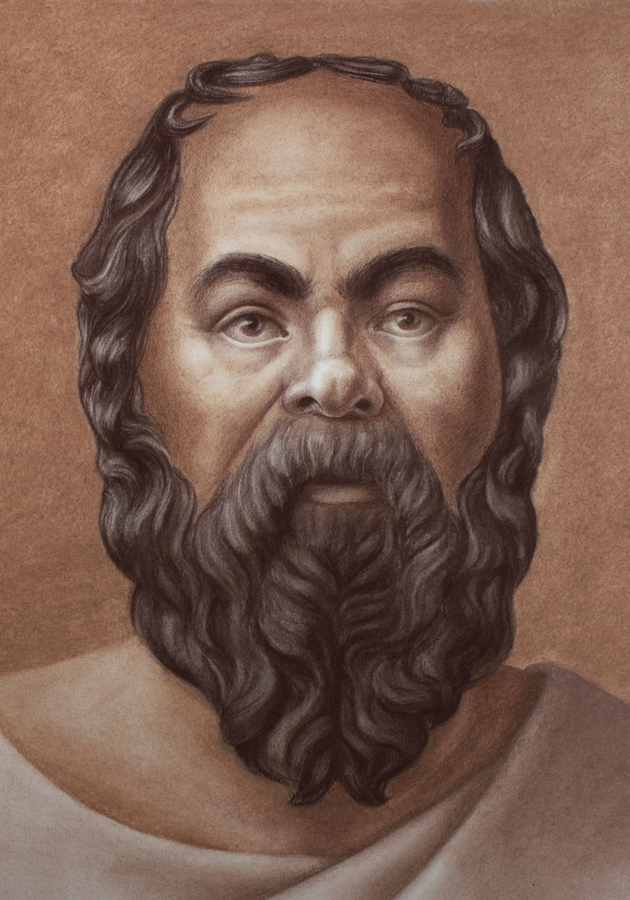From the early years of the 20th century to the beginning of the 1970s, almost every African-American family living in the American South left the land of their forefathers in search of a better life outside of the caste system and the regime of Jim Crow. Although the Great Migration, as historians would come to call this silent pilgrimage, is—in the words of historian Neil McMillen—"Among the most dramatic and compelling (stories) in all chapters of American history", scholars haven’t devoted much of their attention to it. By combining a general historical perspective with intimate stories of three individuals—Ida Mae Gladney, George Swanson Starling, and Robert Pershing Foster—"The Warmth of Other Suns", is an author’s attempt to address that omission. So, get ready to hear more about one of the great untold stories of American history!
Leaving the South
In late October of 1937, Ida Mae Gladney was getting her two children ready for the big journey ahead. Stuffed bags and chaos were all around the room, as Ida Mae was trying to calm her children in order to not bring unnecessary attention from anyone who might happen to see them leaving. Her husband went over to their boss, Mr. Edd, to collect a few dollar-worth salaries they used to earn each year at the end of the cotton harvest. Her mother, Miss Theenie, stood there looking at Ida Mae, her last of four children who still hadn’t gone to the North. She silently prayed for her daughter and her daughter’s family to be protected on the long journey to Milwaukee. “May the Lord be the first one in the car,” Miss Theenie whispered, “and the last out.”
A little less than eight years from the day Ida Mae left Mississippi, George Swanson Starling boarded the colored side of the train. This division was ‘’a final reminder from the place of his birth of the absurdity of the world he was leaving.’’ As he settled back in the train seat, he thought of all the people he did not have enough time to say goodbye to. Well, at least he was getting out of the town alive. George was on the run, and he wouldn’t rest easy until he was out of range of Lake County, beyond the reach of the grove owners he stood up to. He did not know what his life would be like in New York, but he knew he did not want to set foot in Eustis again for the rest of his life.
On Easter Monday, in April 1953, Robert Joseph Pershing Foster packed his belongings in a trunk. There was his medical bag and suit, along with his surgery books, map, an address book, and Ivorye Covington’s fried chicken left from Saturday night. He headed to California to find a job as a surgeon since he could not find one in the city he was leaving. Black doctors were not allowed to perform any surgeries, regardless of how smart or skilled they were.
Why Ida Mae left
Ida Mae Gladney grew up on the curving land in the hill country of northeast Mississippi. Her father had a piece of bottomland where he planted cotton and grew hogs. As she liked being around her father, Ida Mae followed him to the field from an early age, even though she did not like picking cotton. Unfortunately, when he was 43 years old, her father got sick from exposure and fell into a coma shortly after. There were no colored doctors around to cure him. Even when Ida Mae got older, she still believed her family buried her father while still alive. “I still say today he wasn’t dead,” she told Wilkerson. “At that time, they didn’t have a way to know.”
When she was 16 years old, Ida Mae married 23-year old George Gladney and went to work on Edd Pearson’s plantation, a few miles away from her home. By that time, she already had a few direct dealings with white people. The most memorable one was when she was about six or seven years old. Her father sent her to the blacksmith to get his plow sharpened. While she was waiting for the blacksmith to get the job done, his two grown sons came to her wanting to have some fun. They grabbed Ida Mae and took her to the well, letting her legs hang over the rim. She screamed, but there was nobody around to help. Decades later, she would get uncomfortable when thinking about how she could have died if they had dropped her by accident.
The first few years at the Person’s plantation were not as burdensome as they could have been, considering Ida Mae and George worked for a white planter in the late 1920s in Mississippi. However, in the fall of 1937, when Mr. Edds’ men brutally beat George’s cousin Joe Lee with chains out of suspicion that he stole Mr. Edds’ turkeys, George decided it was their time to go North. Next time, Mr. Edd could easily punish George for something he never did. "This the last crop we making", he said to Ida Mae and started making plans for their moving.
You don’t owe me nothing
Wilkerson met George Swanson Starling in New York City in 1996. He was a 78-year-old widower at the time, living in the basement on 132nd Street, west of Lenox Avenue in Harlem. During the talk with Wilkerson, George recalled one of his earliest memories of his grandfather John coming home from the planter’s house. Year after year, these two would meet at the end of the harvest so that John could hear whether he owed anything to his boss. Every time, instead of paying him for the work, his boss would tell him they were even. ‘’We broke even,’’ he would say. "You don’t owe me nothing. And I don’t owe you nothing".
George grew up in Eustis, Florida. What quickly separated him from other children of his age was his love for school and books. Wilkerson writes, "He devoured books even though they were the white schools’ leftovers and had pages missing. He started to think about how he could escape this place, maybe even go to college". After graduating from Curtright Vocational Training School as valedictorian, George enrolled in Florida Agricultural and Mechanical State College in Tallahassee. Unfortunately, due to a lack of money, he could not continue his studies after the second year. His dream to finish college never faded, though. Because of it, he decided to go to Detroit for the summer in 1943 to make enough money for his college tuition. He also wanted to fulfill his wife’s dream and send her to beauty school.
When he returned from Detroit in the autumn, George saw the world in a new light. First of all, he got used to fair wages for hard work. Second, after seeing how colored people were treated more fairly in the North, he felt he could not play the role the southern caste system assigned to him. So, he decided it was time to stand up to the orange grove owners and negotiate better wages for himself and other fruit pickers. Thanks to him, for some time, the pickers ‘’had more money in their pockets than they were raised to think they had a right to.’’ Of course, George’s actions eventually infuriated the owners. When George heard they planned to hang him, he realized leaving was his only option.
What shall we do for servants?
In his book "Following the Color Line", published in 1908, a celebrated journalist Ray Stannard Baker quotes a southern woman who lamented the effect of education for African-Americans. She told Baker: “If these Negroes become doctors and merchants or buy their own farms, what shall we do for servants?”
When Robert Pershing Foster was growing up, very few black people had a chance to go to college. Luckily, Pershing grew up in a family whose members were pretty ambitious. His father was a principal of a colored high school, and his mother was a teacher. Both of his brothers attended college. So, when he graduated from high school, Pershing decided he would follow in their footsteps. He enrolled in Morehouse College in Atlanta, the most prestigious college for coloreds in the country.
Before Pershing knew it, he was moving away from the world governed by southerners to the bourgeois world that he had fallen in love with. In December of 1941, he got married to Alice Clement, daughter of the president of Atlanta University. However, as both of them wanted to make careers for themselves, Alice and Pershing decided they would live separately until they finished their studies. She went off to New York to study music at Juilliard, and he prepared to go to Nashville to attend Meharry Medical College. After finishing Meharry, Pershing moved to St. Louis to serve out his residency.
Unfortunately, despite his talents, the long hours he worked, and the awards he received for his medical skills, the majority of southern hospitals rarely allowed Pershing to enter operating rooms. In 1953, his frustration at not being able to work as a surgeon came to a climax. As Wilkerson writes, ‘’It was hitting him that he would never get ahead as long as these apostles of Jim Crow were over him.’’ So, he weighed his options and decided he would permanently leave for California to find a better future for himself and his family there.
The turning point in the American history
Ida Mae Gladney, George Swanson Starling, Robert Pershing Foster—and six million other black southerners who left the land of their forefathers during the Great Migration—did what people have always done when living in one place became unbearable—they left.
Although with a limited degree of success, black people had been trying to escape the South since 1619, when the first slaves arrived in Virginia. Before the Civil War, the Underground Railroad helped thousands of enslaved African-Americans reach as far north as Canada. Later, in 1879, a former slave, Benjamin “Pap” Singleton, led around 6,000 slaves known as Exodusters from the banks of the Mississippi River onto the free land of Kansas. The enactment of Jim Crow laws in the late 19th and early 20th centuries caused the streams of people to migrate to primarily northeastern cities. However, it was not until the First World War when the Great Migration finally began. The main reason the war itself set off the migration was the cut of supply of European workers to the North. From the beginning to the end of the war, their number plunged by more than 90%. Since the North needed all the labor it could get for war production, naturally, it began attracting the poorest-paid labor of the American South. As a matter of fact, 555,000 African-Americans left the South during the decade of World War One, which is, as Wilkerson notes, ’’More than all the colored people who had left in the five decades after the Emancipation Proclamation.‘’
Over time, people interpreted the story of the Great Migration in many ways. Some tried to blame immigrants for the numerous troubles of the cities they fled to, such as higher unemployment rates, poverty, or family dysfunction. Others emphasized the migrants’ contribution to the rise of the language and music of urban America that sprang from the blues. Nevertheless, Wilkerson believes that questions of whether the migrants improved or deteriorated the life of the northern cities are essentially irrelevant. What we should ask ourselves instead is how the millions of African-Americans ‘’summoned the courage to leave in the first place or how they found the will to press beyond the forces against them and the faith in a country that had rejected them for so long.’’
Final Notes
"The Warmth of Other Suns" is an informative and deeply moving narrative that expands your knowledge of American history and—even more importantly—increases the admiration for the millions of African-American migrants whose bravery to search for freedom has altered the course of their own, and the lives of generations to come. In the words of the Nobel-prize-winning author Toni Morrison, this book is, “Profound, necessary and an absolute delight to read.”
12min tip
Many people around you still do not know the true story of the Great Migration. Why don’t you recommend "The Warmth of Other Suns", or at least tell them what you have learned after reading it?





























